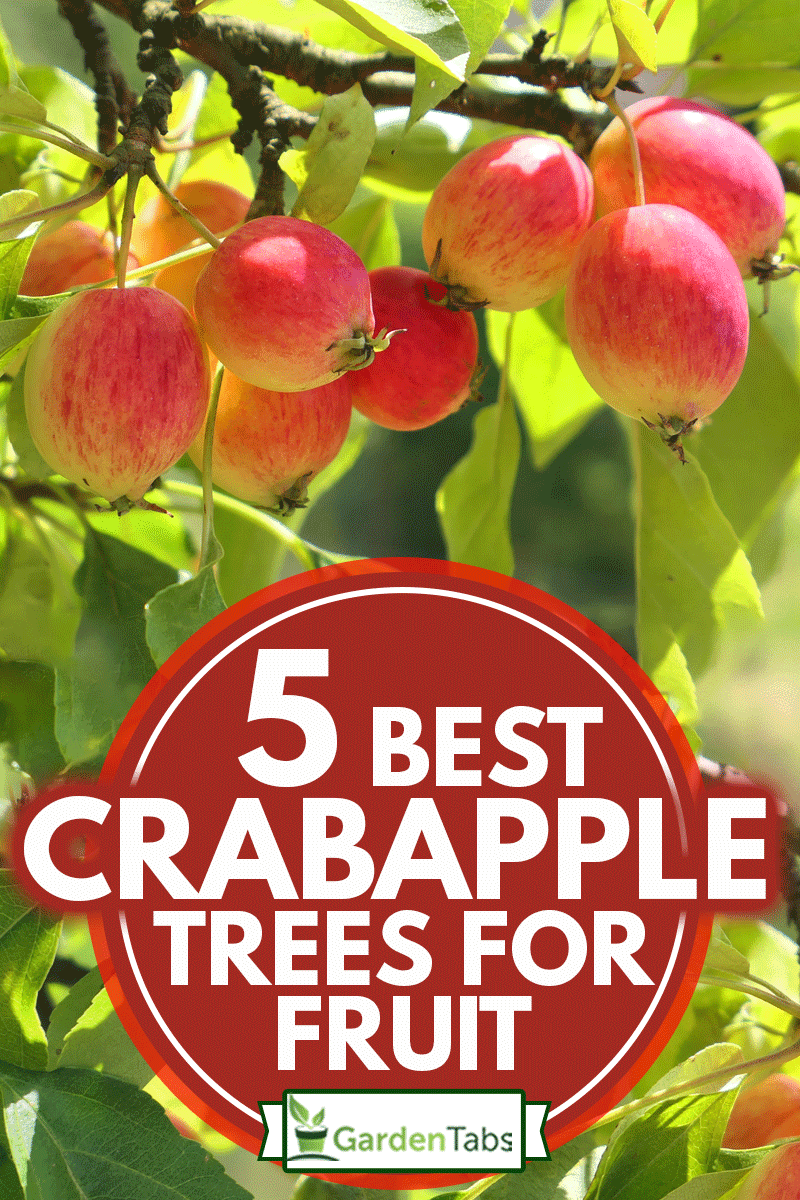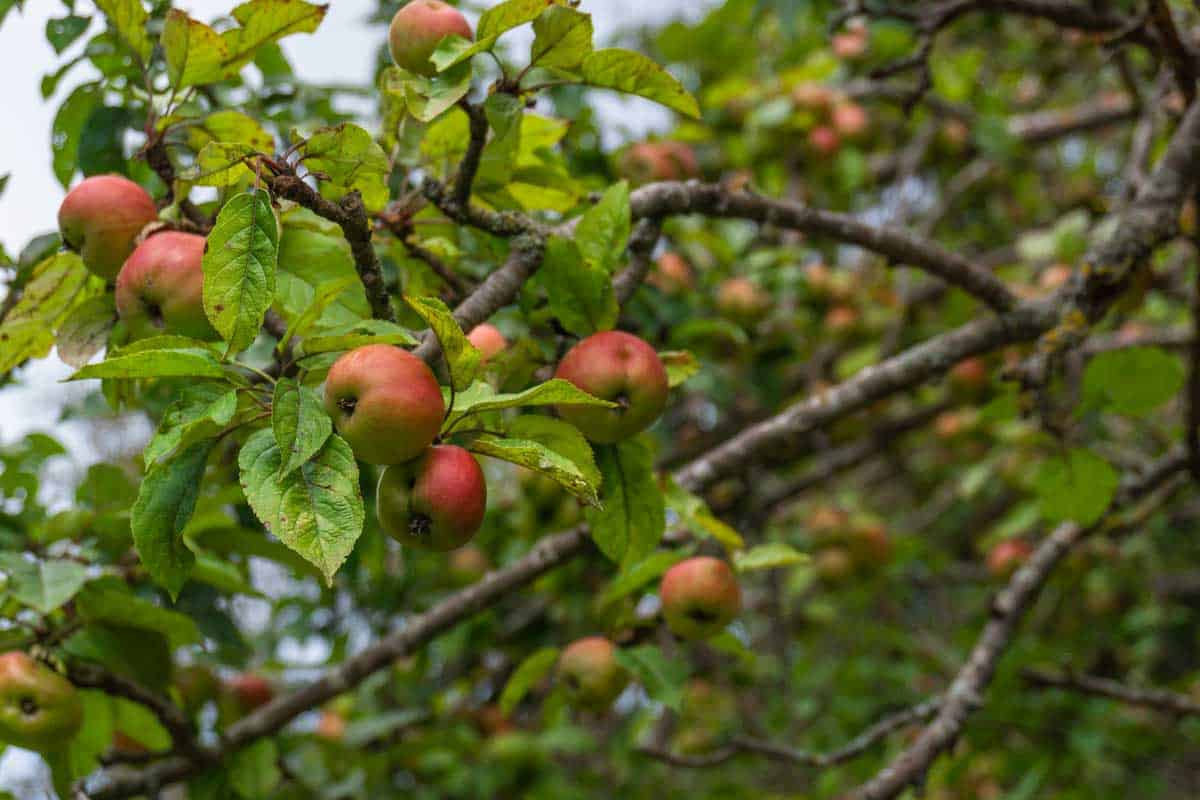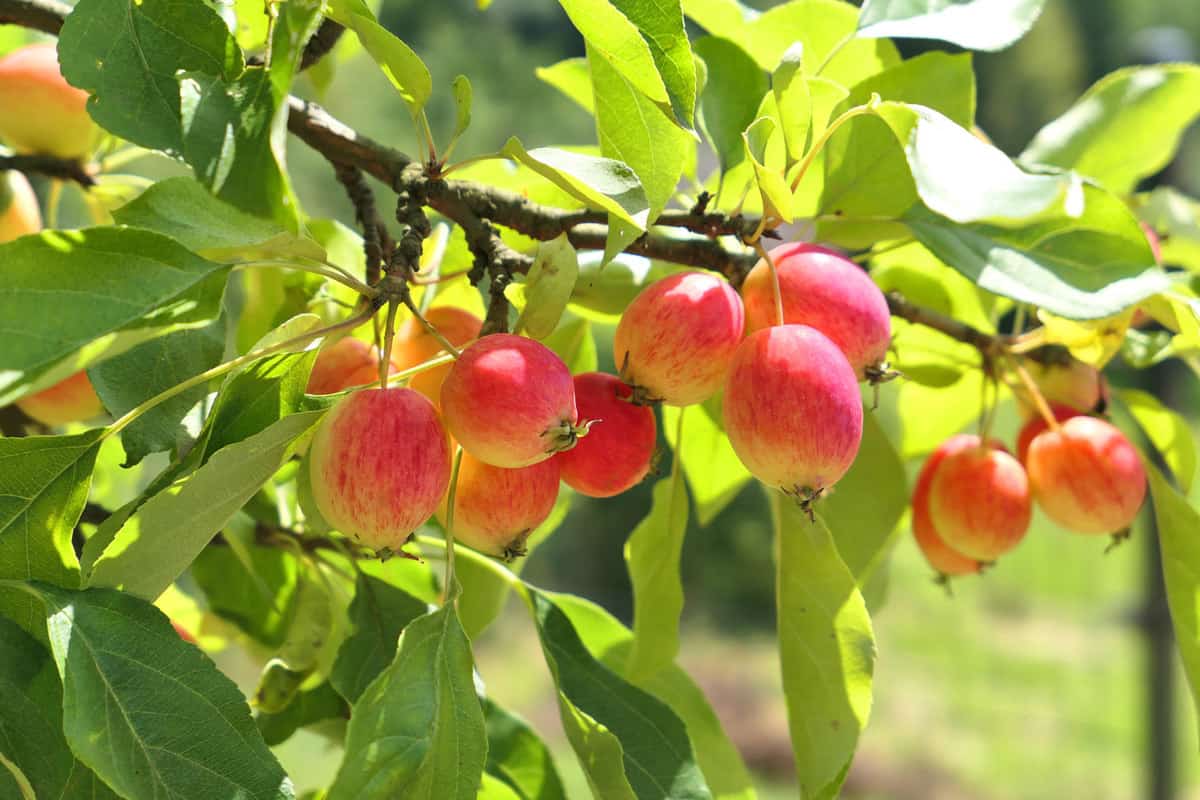Crab apple trees, or Malus, offer beautiful year-round benefits: In the spring, crab apple trees flaunt fragrant blossoms, and in the summer and fall, crab apple trees produce lovely foliage. Aside from beauty, the crab apples that these trees offer are a tasty fruit that ripens from late summer to mid-fall but usually stays on the trees into winter. What are a few of the best crab apple trees for fruit? We've researched this topic thoroughly and have some important information for you.
The 5 best crab apple trees for fruit are:
- Malus 'Butterball'
- Malus 'Red Sentinel'
- Malus 'Jelly King'
- Malus 'Sun Rival'
- Malus 'Evereste'
Now that you know 5 of the best crab apple trees for fruit, but you may want to know a little more about these trees. For example, how long does it take a crab apple tree to produce fruit, and do you need two crab apple trees to produce fruit? We elaborate on that and more in this post! Keep reading to learn more about crab apple trees and their fruit.

Do Crab Apple Trees Drop Their Fruit?
Some crab apple trees drop their fruit in the fall, and some do not; it depends on species. Crab apple trees that do not drop their fruits in the fall have persistent fruits, which are fruits that cling to branches throughout the winter. Because dropping fruit depends on species, let's discuss the five best crab apple species for fruit.
Malus 'Butterball'
Malus 'Butterball' has white blossoms and medium green foliage. This crab apple tree reaches a height and a spread of about 13 feet, making it perfect for gardens.
The crab apples on Malus 'Butterball' are yellow with a tinge of red, a beautiful color combination. They stay on the trees well into winter, making them persistent fruits. The fruits are also fairly large, so they are great for cooking. In fact, many people choose to make crab apple jelly with the fruits.
You can plant Malus 'Butterball' year-round. If you plant Malus 'Butterball' in the spring or summer, you should water it plentifully for the first few months of its life. If the weather is hotter or drier than usual at the time that you planted the tree, increase the amount of water you're giving the tree. On the other hand, if you plant Malus 'Butterball' in the fall, you should only give it a small amount of water.
It is best if you plant Malus 'Butterball' in full sun and moist, loamy soil, as this is what the tree prefers. In addition, it is important to keep the area around the tree free of weeds and grass, as these plants compete with the tree. If you want to prune Malus 'Butterball', just remove any damaged branches at the tree's base. Do not trim the tips of the branches. You can prune this tree in the winter.
Malus 'Red Sentinel'
https://www.pinterest.com/pin/161918549084204509/
Like Malus 'Butterball,' Malus 'Red Sentinel' has beautiful white blossoms. However, the foliage on this tree is light green instead of medium green. Malus 'Red Sentinel' prefers full sun to partial shade. It has a height and a spread of about 9 or 10 feet, making it a smaller crab apple tree.
The crab apples on this tree are a glossy red, and they are fairly small in size, making them similar to cherries. They are persistent fruits, so they stay on Malus 'Red Sentinel' throughout the winter. Though these crab apples are a smaller size, they are suitable for making crab apple jelly. They are also a popular choice for Christmas decorations because of their small size and festive red hue.
When watering Malus 'Red Sentinel', you should follow the watering guidelines for Malus 'Butterball.' Water the tree well for the first few months if planted it during a warm month, but only water it a bit if you planted it during the fall. This tree prefers full sun to partial shade and moist, loamy soils, so be sure to plant it in these conditions. To properly prune this tree, remove damaged or dead branches in the late winter or spring.
Malus 'Jelly King'
Equipped with snowy white flowers and bright green leaves, Malus 'Jelly King' reaches a height and a spread of 13 feet. So, it's about the same size as Malus 'Butterball.'
As you can assume, this tree is called Malus 'Jelly King' because its crab apples are perfect for making jelly! The crab apples from this tree are orange with hints of red and pink, and they are fairly large in size. Their large size is what makes it easy for people to cook with them. So, while you can make crab apple jelly with the fruit from many crab apple trees, it is easiest to make it with the fruit from Malus 'Jelly King.'
Water Malus 'Jelly King' like you would water the previously mentioned trees on this list. If you are planting this tree in the spring or summer, water it well, and increase watering during extremely dry periods; if you are planting it during the fall, only water it a bit.
Be sure to plant Malus 'Jelly King' in full sun and in loamy soils for the best results. You can prune these crab apple trees in the winter, and you should simply remove any dead or damaged branches when pruning.
Malus 'Sun Rival'
https://www.pinterest.co.uk/pin/353673376971771159/
Malus 'Sun Rival' has white flowers with hints of pink and yellowish foliage. It is a weeping crab apple tree, and its weeping form helps it offer a unique beauty. At peak growth, it reaches a height and a spread of about 10 feet.
The crab apples on Malus 'Sun Rival' are a vibrant red, and they are significantly small in size. Because the fruits are so small in size, people have trouble using them to make jellies or other treats. Thus, the crab apples from this tree don't serve much of a purpose in the culinary world. However, they are persistent fruits, so they do feed wildlife throughout the winter.
The watering, sunlight, soil, and pruning recommendations for this crab apple tree are the same as the other trees on this list. Therefore, care for Malus 'Sun Rival' like you would the other crab apple trees.
Malus 'Evereste'
https://www.pinterest.com/pin/163185186481499389/
Malus 'Evereste' flaunts pink-tinged white flowers, just as Malus 'Sun Rival' does. The flowers on Malus 'Evereste' are larger than the flowers on many other crab apple trees, giving this tree a special beauty. Its foliage is dark green in the spring and yellow in the fall. This compact crab apple tree reaches a height of about 16 feet and a spread of about 13 feet at full maturity.
The crab apples on Malus 'Evereste' are orange-red with traces of yellow, and they are persistent fruits. These crab apples are very versatile! People can use them to make jelly, or they can leave them on the trees for wildlife to enjoy.
Malus 'Evereste' prefers the same amount of water and sunlight and the same type of soil that all of the previously mentioned crab apple trees prefer. You should follow the pruning guidelines established for the other trees on this list if you want to prune Malus 'Evereste.'
One significant and beneficial characteristic of the Malus 'Evereste' is its resistance to pollution. Because it is resistant to pollution, this crab apple is a great option if you live in a big city.
How Long Does It Take a Crab Apple Tree to Produce Fruit?

A crab apple tree usually produces fruit in about 2 to 5 years. However, a crab apple tree's fruit production greatly depends on the climate and other conditions that it endures. As established, most crab apple trees thrive in full sun to partial shade and loamy soils. If these conditions are satisfied for the tree, it may produce fruit earlier.
Do You Need At Least Two Crab Apple Trees to Produce Fruit?
Yes, you do need at least two crab apple trees to produce fruit. In order for crab apple trees to fruit, cross-pollination has to occur. Cross-pollination involves the pollen from a male tree being transferred to the flowers of a female tree, thus fertilizing the tree and producing fruit. So, in short, if you want your crab apple trees to produce fruit, you need at least two of them to cross-pollinate.
What are Crab Apples Good for?
Crab apples have a sour taste, so many people don't like to eat them raw. However, crab apples are really good for making certain foods, most notably jelly. People often use crab apples to make jelly because these fruits have high pectin content. Also, the sourness from the fruits can pair well with the other sweet ingredients used to make the jelly.
Many people like to store their jelly in mason jars. Click here to find a set of mason jars for jelly on Amazon.
Crab apples also offer many health benefits! Crab apples help treat several ailments, including indigestion, constipation, inflammation, and gout. They are able to treat these issues because of the malic and tartaric acids that they contain.
In addition, crab apples are good for attracting insects, including butterflies and honey bees. It's super beneficial that they attract honey bees, as this facilitates pollination.
In Closing

Crab apple trees add a lot of beauty to a landscape, and you can use their fruits for many things, including food and decorations. Five of the best crab apple trees for fruit include Malus 'Butterball,' Malus 'Red Sentinel,' Malus 'Jelly King,' Malus 'Sun Rival,' and Malus 'Evereste.'
If you are considering planting a crab apple tree, remember that it produces fruit in 2 to 5 years and that you need two to produce.
Before you go, check out our other articles:

